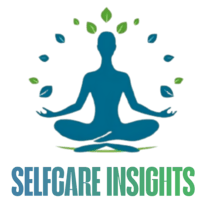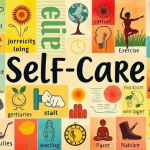
The Art of Digital Detox: How to Disconnect and Reclaim Your Peace
Why Digital Detox is Important for Your Mental Health

In today’s digital age, where technology plays a significant role in our lives, it’s easy to become engulfed in a constant state of connectivity. The endless notifications, emails, and social media updates can lead to feelings of overwhelm and anxiety, impacting our mental well-being. Taking a step back and engaging in a digital detox can provide a much-needed break from the screen-induced stress and help recenter our minds.
When we are constantly plugged in, our brains are bombarded with information, making it difficult to focus and relax. This constant stimulation can lead to feelings of restlessness, decreased productivity, and even disrupted sleep patterns. By intentionally disconnecting from our devices and giving ourselves time to unwind, we allow our minds to rest and recharge, ultimately improving our mental clarity and emotional resilience.
Recognizing the Signs of Digital Overload
In today’s fast-paced digital world, it’s easy to get caught up in the constant stream of information and communication that technology provides. However, it’s important to be mindful of the signs that may indicate you are experiencing digital overload. One common sign is feeling constantly overwhelmed or anxious when you are away from your devices, always feeling the need to check for notifications or updates. This sense of being tethered to your screens can lead to increased stress levels and a sense of being constantly “on” without a break.
Another sign of digital overload is when your online activities begin to interfere with your daily responsibilities and relationships. If you find yourself neglecting tasks at work or at home because you are spending excessive amounts of time on your devices, it may be a red flag that your digital habits are out of balance. Additionally, if your screen time is causing you to isolate yourself from in-person interactions with loved ones or preventing you from engaging in activities that you used to enjoy, it’s important to take a step back and reassess your relationship with technology.
Setting Boundaries with Technology in Your Daily Life
In today’s digitally driven world, it can be challenging to establish healthy boundaries with technology in our daily lives. With the constant presence of smartphones, tablets, and computers, it’s easy to find ourselves endlessly scrolling through social media feeds or responding to work emails at all hours. This constant connectivity can blur the line between personal time and screen time, leading to increased stress and decreased overall well-being.
Setting boundaries with technology is crucial for maintaining a healthy balance and preserving our mental health. One effective way to establish these boundaries is by designating specific times during the day for technology use and carving out periods of screen-free time for activities that promote relaxation and mindfulness. By consciously creating limits on when and how we engage with technology, we can reclaim our time, focus on meaningful interactions, and nurture our mental and emotional well-being in the process.
Creating a Digital Detox Plan That Works for You
When creating a digital detox plan that works for you, it’s important to be realistic about your goals and expectations. Start by evaluating your current screen time habits and identifying areas where you can cut back. Set specific boundaries for when and how you will use technology, and stick to them as much as possible. Remember, the goal is not to completely eliminate technology from your life, but to find a healthier balance that allows you to disconnect when needed.
Incorporate activities that bring you joy and fulfillment outside of screens into your daily routine. This could include exercising, reading, spending time with loved ones, or pursuing a hobby. By filling your time with activities that nourish your mind and body, you’ll be less tempted to mindlessly scroll through your devices. Experiment with different strategies to see what works best for you and be willing to adjust your digital detox plan as needed to fit your lifestyle and preferences.
Exploring Alternative Activities to Replace Screen Time

When looking to replace screen time with alternative activities, there are numerous options to explore. Engaging in physical exercise, such as going for a walk or practicing yoga, can help you disconnect from screens while improving your overall well-being. Getting lost in a good book, listening to music, or trying out a new hobby like painting or gardening can also provide a much-needed break from digital devices.
Additionally, spending time outdoors and connecting with nature is a great way to rejuvenate and recharge without the distractions of screens. Whether it’s taking a hike in the mountains, having a picnic in the park, or simply stargazing at night, immersing yourself in the natural world can be a refreshing escape from the constant buzz of technology.
Benefits of Disconnecting from Technology Regularly
Disconnecting from technology regularly offers a multitude of benefits for our mental and emotional well-being. One major advantage is the opportunity to regain focus and productivity in everyday tasks. Without the constant distractions of notifications and alerts, we can dedicate our full attention to the present moment, leading to increased efficiency and a sense of accomplishment in our work and personal endeavors. Additionally, taking breaks from screens allows us to reduce mental fatigue and prevent burnout, which are common side effects of excessive technology use.
Moreover, disconnecting from technology regularly provides a chance for us to reconnect with ourselves and our surroundings. Instead of being constantly tethered to our devices, we have the space to engage in self-reflection and introspection. This break from the digital world fosters a deeper connection to our inner thoughts and emotions, leading to improved self-awareness and a greater sense of clarity. By stepping away from screens, we can also better appreciate the beauty of the world around us, finding joy in simple pleasures and moments of stillness that often go unnoticed in the hustle and bustle of daily life.
Tips for Managing FOMO (Fear of Missing Out) During a Digital Detox
It’s normal to experience FOMO (Fear of Missing Out) when disconnecting from technology during a digital detox. To manage these feelings, remind yourself of the purpose behind the detox and the benefits it can bring to your mental health. Practice staying present in the moment and focus on enjoying the activities you are engaging in offline. Redirect your attention to the present moment and the people around you rather than scrolling through social media to alleviate feelings of missing out.
Another tip for managing FOMO during a digital detox is to limit exposure to triggers that may exacerbate these feelings. Consider temporarily muting notifications on your devices or unfollowing accounts that often trigger comparisons or feelings of inadequacy. By creating boundaries with technology and curating your digital environment, you can reduce the temptation to constantly check for updates and stay more present during your detox experience.
Practicing Mindfulness and Meditation to Aid in Digital Detox
Mindfulness and meditation can be powerful tools in helping individuals navigate the challenges of digital detox. By cultivating mindfulness, individuals can increase their awareness of their thoughts, emotions, and behaviors related to technology use. This heightened awareness can help bring clarity to the impact of excessive screen time on their mental well-being. Through meditation practices, individuals can learn to quiet the mind, reduce stress levels, and create space for reflection on their relationship with technology.
Incorporating mindfulness and meditation into a digital detox plan can provide a sense of grounding and inner peace amidst the distractions of the digital world. Practicing mindfulness techniques such as deep breathing exercises or body scans can help individuals stay present and focused on the present moment, rather than succumbing to the constant lure of screens. Engaging in regular meditation sessions can also offer a much-needed break from the overstimulation of technology, allowing individuals to reconnect with themselves and their surroundings on a deeper level.
Engaging in Outdoor Activities to Disconnect from Screens

Spending time outdoors can provide a much-needed break from the constant stimulation of screens that dominate our daily lives. Engaging in activities such as hiking, biking, or simply taking a leisurely walk in nature can help reset our focus and reconnect us with the present moment. The natural beauty and fresh air outside can be a refreshing change from the digital world, allowing us to rejuvenate our minds and bodies.
Whether it’s exploring a nearby park, going for a swim in a lake, or having a picnic in a garden, outdoor activities offer a chance to unwind and destress. Immersing ourselves in the sights and sounds of nature can help reduce feelings of anxiety and overwhelm that often accompany excessive screen time. By stepping away from our devices and immersing ourselves in the great outdoors, we can cultivate a sense of peace and tranquility that is essential for our overall well-being.
Establishing Tech-Free Zones in Your Home
Creating tech-free zones in your home can be a vital step in promoting a healthier relationship with technology. Designating specific areas where screens are not allowed can help create a more focused and serene environment. Whether it’s the dining room during meal times or the bedroom before bedtime, establishing these zones can encourage more meaningful interactions and improve overall well-being.
By setting boundaries around technology use in certain areas of your home, you can carve out spaces dedicated to relaxation, connection, and creativity. These tech-free zones provide a sanctuary from the constant stimulation of screens, allowing you to unwind, engage in offline activities, and foster deeper connections with your loved ones. By consciously creating these spaces, you can cultivate a sense of balance and mindfulness in your daily life.
Connecting with Loved Ones Face-to-Face Without Screens
When was the last time you sat down with a loved one, face-to-face, without any screens interrupting the moment? In today’s digital age, it’s easy to get caught up in virtual connections and forget the joys of real-life interactions. Setting aside time to engage in meaningful conversations, share laughter, and create memories in person can strengthen relationships in ways that texts or calls simply can’t match. By unplugging from screens and focusing on the person in front of you, you can deepen your connections and foster a sense of genuine presence and understanding.
Whether it’s a leisurely coffee date, a walk in the park, or a game night at home, finding opportunities to connect with loved ones in a screen-free environment can be incredibly rewarding. Not only does it allow for more authentic communication and emotional bonding, but it also gives you the chance to truly engage with each other’s thoughts, feelings, and experiences without distractions. So, next time you’re planning to catch up with a friend or family member, consider setting aside the devices and embracing the beauty of face-to-face interactions.
Learning to Embrace Boredom and Silence During a Digital Detox
During a digital detox, it’s common to feel restless or uncomfortable when faced with moments of boredom or silence. We have become so accustomed to constant stimulation and distractions that these moments can initially seem daunting. However, learning to embrace and even welcome boredom and silence is key to reaping the full benefits of disconnecting from technology. Instead of immediately reaching for your phone or seeking out entertainment, allow yourself to sit with the discomfort and use this time for self-reflection and mindfulness.
By embracing boredom and silence during a digital detox, you give yourself the opportunity to slow down and truly connect with your thoughts and emotions. It can be a time for introspection, creativity, and inner peace that is often drowned out by the noise of the digital world. Embracing these moments can lead to a greater sense of clarity, improved focus, and a deeper understanding of yourself. It’s a chance to rediscover the beauty in simplicity and find contentment in the present moment.
Finding Balance Between Work and Personal Screen Time

In today’s digital age, finding a balance between work-related screen time and personal screen time has become increasingly crucial for overall well-being. With the blurred lines between professional and personal life, it’s easy to fall into a cycle of constant connectivity that can take a toll on mental health. Setting clear boundaries and allocating specific time for work tasks and personal activities can help in maintaining this balance.
It’s essential to prioritize self-care and relaxation by consciously limiting screen time outside of work hours. Engaging in activities that promote mindfulness, such as reading a book, going for a walk, or practicing a hobby, can help in disconnecting from the demands of technology. By setting boundaries and being mindful of our screen usage, we can create a healthier relationship with technology and improve our overall quality of life.
Understanding the Impact of Blue Light on Sleep and Overall Health
Blue light, emitted by electronic devices such as smartphones, tablets, and computers, can disrupt our circadian rhythm and interfere with the production of melatonin, the hormone responsible for regulating our sleep-wake cycle. Exposure to blue light, especially before bedtime, can trick our brains into thinking it’s still daytime, making it harder to fall asleep and negatively impacting the quality of our rest.
Research suggests that prolonged exposure to blue light at night not only affects our sleep but can also have broader implications for our overall health. Disrupted sleep patterns have been linked to a variety of health issues, including an increased risk of obesity, diabetes, cardiovascular problems, and even mental health disorders. It’s important to be mindful of our exposure to blue light, especially in the hours leading up to bedtime, to ensure we are giving our bodies the best chance at restorative and rejuvenating sleep.
Utilizing Apps and Tools to Limit Screen Time
When it comes to reducing screen time and creating a healthier balance with technology, various apps and tools can be incredibly helpful. One popular option is setting timers or using apps that track your usage, providing insight into how much time you spend on different apps or websites. By becoming more aware of your screen time habits, you can make more informed decisions on where you may need to cut back. Additionally, there are apps available that allow you to block certain websites or apps during designated times, helping you stay focused and less tempted to mindlessly scroll or engage with screens excessively. These tools can serve as effective reminders and aids in your efforts to limit screen time and prioritize other activities.
Creating a Digital Detox Challenge for Yourself or with Friends
Embarking on a digital detox challenge can be a powerful way to reclaim your time and mental space from the constant lure of technology. By challenging yourself or engaging in a group effort with friends, you can hold each other accountable and make the experience more enjoyable and impactful. Setting specific goals and guidelines for the detox period can help you stay focused and committed to reducing your screen time and fostering more meaningful offline connections.
During the digital detox challenge, consider incorporating activities that promote mindfulness, creativity, and human connection. Whether it’s going for a hike, attending a cooking class, or having a board game night with friends, find ways to actively engage with the world around you without relying on screens for entertainment. By participating in a digital detox challenge, you can gain a fresh perspective on your relationship with technology and discover the benefits of unplugging in today’s constantly connected world.
Exploring the Connection Between Screen Time and Stress Levels

Excessive screen time has been closely linked to heightened stress levels in individuals across various age groups. The constant exposure to screens, whether through smartphones, computers, or televisions, can lead to increased feelings of anxiety, tension, and overwhelm. Research suggests that the blue light emitted by screens can disrupt the production of melatonin, a hormone that regulates sleep, leading to sleep disturbances and ultimately contributing to elevated stress levels.
Moreover, the endless scrolling through social media feeds and constant notifications can create a sense of FOMO (Fear of Missing Out) and comparison, further exacerbating stress and dissatisfaction. The pressure to constantly be connected and engaged with digital devices can leave individuals feeling mentally drained and emotionally strained. It is essential to recognize the impact of excessive screen time on stress levels and to take proactive steps towards establishing a healthier relationship with technology.
Seeking Professional Help for Technology Addiction
If you find that your technology use is interfering with your daily life, relationships, or responsibilities, it may be time to seek professional help for technology addiction. A mental health professional can assess your situation, provide strategies for managing your technology use, and offer therapy to address any underlying issues contributing to your addictive behavior. They can also help you navigate the challenges of reducing screen time and developing healthier habits that promote overall well-being.
Professional help for technology addiction can come in various forms, such as individual therapy, group therapy, or specialized programs tailored to address excessive technology use. By working with a trained professional, you can gain valuable insights, tools, and support to overcome your addiction and regain control over your digital habits. Remember, seeking help is a positive step towards creating a more balanced and fulfilling relationship with technology.
Reflecting on the Positive Changes After Completing a Digital Detox
After completing a digital detox, many individuals report feeling more present in their daily lives. They notice an increased ability to engage in meaningful conversations with loved ones without the constant distraction of screens. Some find themselves enjoying the simple pleasures of life, such as reading a book, taking a walk, or savoring a meal without feeling the need to document every moment on social media. The sense of calm that follows a break from technology can lead to a deeper appreciation for the world around us and a more profound connection to our inner selves.
Furthermore, individuals often experience improved sleep quality after reducing their screen time. Without the blue light emitted by electronic devices disrupting their circadian rhythms, many find it easier to fall asleep and wake up feeling refreshed. This newfound restfulness can have a ripple effect on overall well-being, leading to increased energy levels, better mood regulation, and enhanced cognitive function. By reflecting on the positive changes brought about by a digital detox, individuals can gain a better understanding of the importance of setting boundaries with technology and prioritize their mental health moving forward.
Setting Intentions for a More Balanced Relationship with Technology
In order to establish a more balanced relationship with technology, it is crucial to set clear intentions on how you want to engage with digital devices and screens. Start by reflecting on your current habits and identifying areas where you may be over-relying on technology. Consider what your priorities are and how technology can either support or hinder them. Setting specific goals and boundaries can help you navigate the digital world more intentionally and mindfully.
Once you have established your intentions, make a plan to implement changes in your tech usage. This could involve scheduling designated tech-free times during the day, prioritizing real-life interactions over digital communication, or exploring alternative activities that don’t involve screens. By consciously choosing how and when to engage with technology, you can regain a sense of control and create a healthier balance between your online and offline worlds.










